ESG at a Crossroads: Down, But Not Out


With the 2023 proxy season in the rear-view mirror, financial analysts noted a sharp decline in shareholder support for environmental, social and governance proposals. However, anti-ESG proposals also failed to stick, and signs of an ESG resurgence are already beginning to emerge.
Mixed support in the 2023 proxy season
Most U.S. companies hold proxy sessions between April and June, enabling shareholders to vote on issues without being present.
Based on the outcome of the 2023 season, shareholders seem to be losing interest in ESG issues. In a June analysis, the firm FTI Consulting noted that “2023 has seen investors support significantly less environmental and social proposals than in past years.”
The question is whether or not the drop-off marks a permanent trend or a temporary reaction to current events. FTI attributed much of the decline to the “anti-ESG" agenda, explaining: “The scrutiny on institutional investor vote behavior…by the anti-ESG activists has caused institutional investors to support less environmental and social proposals in 2023.”
At the same time, anti-ESG proposals also failed to garner much support from shareholders over the past five years, the analysis found. FTI advised that other factors can also have a significant influence on ESG support. Analysts cited the 2022 proxy season, which also saw a drop in ESG support after a rules change by the U.S. Securities and Exchange Commission. The change fostered a spike in the number of prescriptive proposals to come up for a vote, and prescriptive proposals generally receive low support from shareholders regardless of their subject matter.
We don’t talk about ESG, but we do it
One area where the anti-ESG movement has clearly had an impact is in the way in which bankers, money managers and other financial stakeholders communicate. Many continue to put the principles into action while avoiding specific references to ESG, as shown by a recent Bloomberg survey.
“About two-thirds of respondents in a survey of roughly 300 Bloomberg terminal users said the anti-ESG movement that started in the U.S. last year will force firms to stop using those three letters in conversations with clients,” Alastair Marsh and Lisa Pham of Bloomberg observed last month. “However, they’ll continue to incorporate environmental, social and governance metrics in their business."
Financiers under fire
The Bloomberg analysis is among those attributing ESG avoidance to an aggressive, partisan political environment of legislative and legal attacks on ESG investing.
Though the issue seems to have failed to gain traction among voters, fossil energy stakeholders have been credited with motivating Republican office holders to act. Their efforts reportedly include model bills created by the American Legislative Exchange Council (ALEC), which has established a right-wing reputation with an emphasis on protecting fossil fuels.
“The finance industry is now grappling with a second year of attacks on ESG by key members of the Republican Party, including threats of litigation from state attorneys general, as well as outright bans on the strategy in some U.S. states,” Marsh and Pham of Bloomberg noted.
The attacks prompted one of the highest-profile proponents of the ESG investing movement, BlackRock CEO Larry Fink, to stop using the acronym altogether.
"I don't use the word ESG any more, because it's been entirely weaponized ... by the far left and weaponized by the far right," Fink told a gathering at the Aspen Ideas Festival last summer, as reported by Reuters. In the same speech, he reaffirmed BlackRock’s commitment to discussing decarbonization, corporate governance and social issues with the companies in its portfolio.
Financiers fight back
Despite the political headwinds, financial stakeholders continue to act in support of social and environmental principles. Part of the effort is happening behind the scenes, as financial stakeholders seek to convince legislators that anti-ESG bills will result in financial harm to their states.
In a recent analysis, S&P Global identified 12 states in which Republican legislators “successfully pushed anti-environmental, social and governance legislation across the finish line.” In all, 19 states now have one or more anti-ESG laws on the books.
That may seem like a substantial gain, but the legislative failures outweighed the successes. “Many anti-ESG bills introduced in 2023 … failed after chambers of commerce, banking associations and public pension officials raised concern over costs or free market principles,” S&P observed.
In addition, only four of the 25 new anti-ESG laws to pass this year remained intact by the time of the August analysis. The other 21 were substantially revised to protect state pension funds. S&P cited Indiana and Texas as examples, both of which would have faced billions in losses over 10 years without the revisions.
Taking it to the courts
Financial stakeholders are also taking their case to court. For example, last month the Securities Industry and Financial Markets Association (SIFMA) — an industry group that counts BlackRock among its members — moved to challenge new Missouri rules on ESG documentation.
The rules went into effect on July 30. As described by SIFMA, they stipulate burdensome documentation that no other state requires. SIFMA argues that the new rules put Missouri in direct conflict with the 1996 National Securities Markets Improvements Act, under which states cannot preempt standard federal record-keeping rules.
“Under existing federal securities laws, broker-dealers and investment advisers are already required to provide investment advice that is in the best interest of their customers," the group argued as it announced the suit. "The Missouri rules are thus unnecessary and create confusion."
The climate factor
New reporting rules established by the European Union may also motivate U.S. companies to continue making progress on ESG principles, regardless of what's happening at home.
The new EU Corporate Sustainability Reporting Directive became effective last January. “This new directive modernizes and strengthens the rules concerning the social and environmental information that companies have to report,” the European Commission's website reads. The new rules cover large companies as well as small and midsized companies.
In June, the Republican-led ESG Working Group in the U.S. House of Representatives released an interim report that recommended protecting U.S. companies from “burdensome EU regulations.” However, Republican leadership will have a hard time reconciling protectionism with their party’s longtime support for free market principles.
The anti-ESG movement is also floundering on the national stage. Surveys routinely reflect public support for ESG principles. Moreover, high-profile Republicans aren't helping the case.
The hapless presidential campaign of Florida Gov. Ron DeSantis is one example. Among other issues, the Republican governor has cultivated a reputation for opposing ESG investing, highlighted by a high-stakes legal feud with Florida’s top employer, Disney, over LGBTQ rights.
Another example is the looming impeachment of Texas Attorney General Ken Paxton, a prominent anti-ESG Republican, on charges of corruption and bribery. His wife’s reported involvement with a shell company has raised additional questions about allegiance to the principles of fiduciary duty.
Looming over all this is climate change, a factor from which Florida, Texas and other anti-ESG states are hardly immune. With the exception of fossil energy stakeholders, the rising threat of climate risks will continue to influence and motivate corporate behavior regardless of the outcome of the upcoming 2024 proxy season.
Image credit: Justin Luebke/Unsplash
Corporate 100 Percent Renewable Energy Goals: From Ambition to Implementation


Companies around the world are looking to meet 100 percent of their energy needs with renewable sources in order to reduce greenhouse gas emissions in the fight against climate change. But what are the next steps once the commitments are down on paper, and how do companies move from good intentions to implementation of their renewable energy goals?
Henkel, which owns well-known consumer and industrial brands including Dial personal care products, All laundry care, Schwarzkopf hair products, Loctite adhesives and more, is making progress on its own target, and can serve as an example to other companies looking to bridge the gap between ambition and action.
Renewable energy and corporate decarbonization: How the real work happens.
Henkel aims to source 100 percent of purchased electricity from renewables by 2030 and is well on its way to meeting that goal. Dirk Ullrich, senior global expert on climate change for Henkel, is one of the many employees responsible for ensuring operational sustainability at the company’s 166 global production sites. “We have an ambition to be climate-positive in our operations by 2030,” Ullrich said. “We are confident that we will outpace our target, and parts of it early.”
“We have a strict hierarchy for our energy programs,” Ullrich continued. “First, we look into energy efficiency and renewable power generation on-site. We also look for regional energy sourcing solutions like virtual power purchase agreements, or direct energy contracts to create additionality in the markets.”
Virtual power purchase agreements (VPPAs) are long-term renewable energy contracts that feed power from specific renewable energy plants into the supply grid, in an amount that is equal to the amount consumed. Henkel is using an off-site VPPA with a wind farm in Bee County, Texas.
“Increasing Henkel’s investment in climate-positivity in our worldwide production is at the heart of our sustainability transformation, and we’re glad to be contributing to this important effort here in North America,” said Pernille Lind Olsen, president of Henkel North America, corporate senior vice president for adhesive technologies, packaging and consumer goods, and regional head of adhesive technologies in North America. “This VPPA agreement covers a capacity equivalent to 100 percent of the electricity demand for our operations in the U.S. That’s more than 30 production sites, which represents a significant reduction in our carbon footprint.”
The wind farm was developed by energy provider Ørsted and generates renewable energy that has fed into the public grid since June 2022. The entire wind park area is 15,000 acres and is expected to generate over 850 gigawatts of electricity on average each year. This equals the energy needed to power approximately 90,000 U.S. households.
“We’re pleased to work with Henkel to deliver renewable energy from Helena Wind Farm,” said Monica Testa, head of origination at Ørsted. “Henkel’s commitment to this project directly contributes to increasing renewable energy supply to the Texas electric grid and meeting our global decarbonization goals.”
A recent solar VPPA in Spain covers Henkel’s electricity demand of more than 40 sites in Europe, and the company is also investing in energy generation at its own production sites globally. In Australia, among other countries, two of Henkel’s factories installed rooftop solar panels. Together with the utilization of new energy-saving equipment and sourcing contracts for renewable energy, the plants have successfully transitioned to 100 percent renewable electricity usage.
Still, Ullrich noted that it is more difficult to source renewable energy in some countries than others, and this has been a challenge for the company in some places where it has operations.
Real action on renewables builds trust with stakeholders — and engages them as partners in the fight against climate change.
“Climate change is a global problem, but the solutions are local,” Ulrich said. Beyond decarbonizing its own operations, Henkel aims to provide consumers with as many opportunities as possible to lower their own household energy use. For example, the company has developed technologies for its laundry detergents that allow consumers to wash clothes at very low temperatures and with combined colors.
Henkel’s ambition has helped the company keep solid marks from climate rating agencies. “Henkel has been included in the CDP Supplier Engagement Leaders Board for 2022, belonging to the top 8 percent of companies assessed for supply chain engagement on climate change,” Ullrich said. “We take this seriously. We do not play the game to get the best possible score, but we work instead for the highest level of credibility.”
The bottom line: We all have a role to play in a low-carbon future.
For Ullrich, his work at Henkel is personal. “When it comes to a sustainable future, there is hope, but we have to act,” he said. “Individuals, communities, and corporations all have the opportunity to make meaningful changes that contribute to sustainability efforts. Current trends show that that within five to six years, we will likely use up the global 1.5-degree carbon budget, so by 2025, there will be no carbon budget left. The more we do today to act on this creates less of a burden for generations to come.”
Companies must act quickly to make that burden smaller, he continued. “I see a lot of targets, goals and pledges, but we need action.”
To move from target-setting to real impact, companies and other stakeholders must also recognize the nuance of the challenges they face and act accordingly. “Sustainability topics are linked and intertwined,” Ullrich said. "You can't discuss climate in a silo. Climate can only be tackled when you have a good understanding of other issues like water and the circular economy, because we need to think circularly to look into climate protection.”
This article series is sponsored by Henkel North America and produced by the TriplePundit editorial team.
Image courtesy of Henkel North America
Clean Tractors and the Energy-Independent Farm of the Future
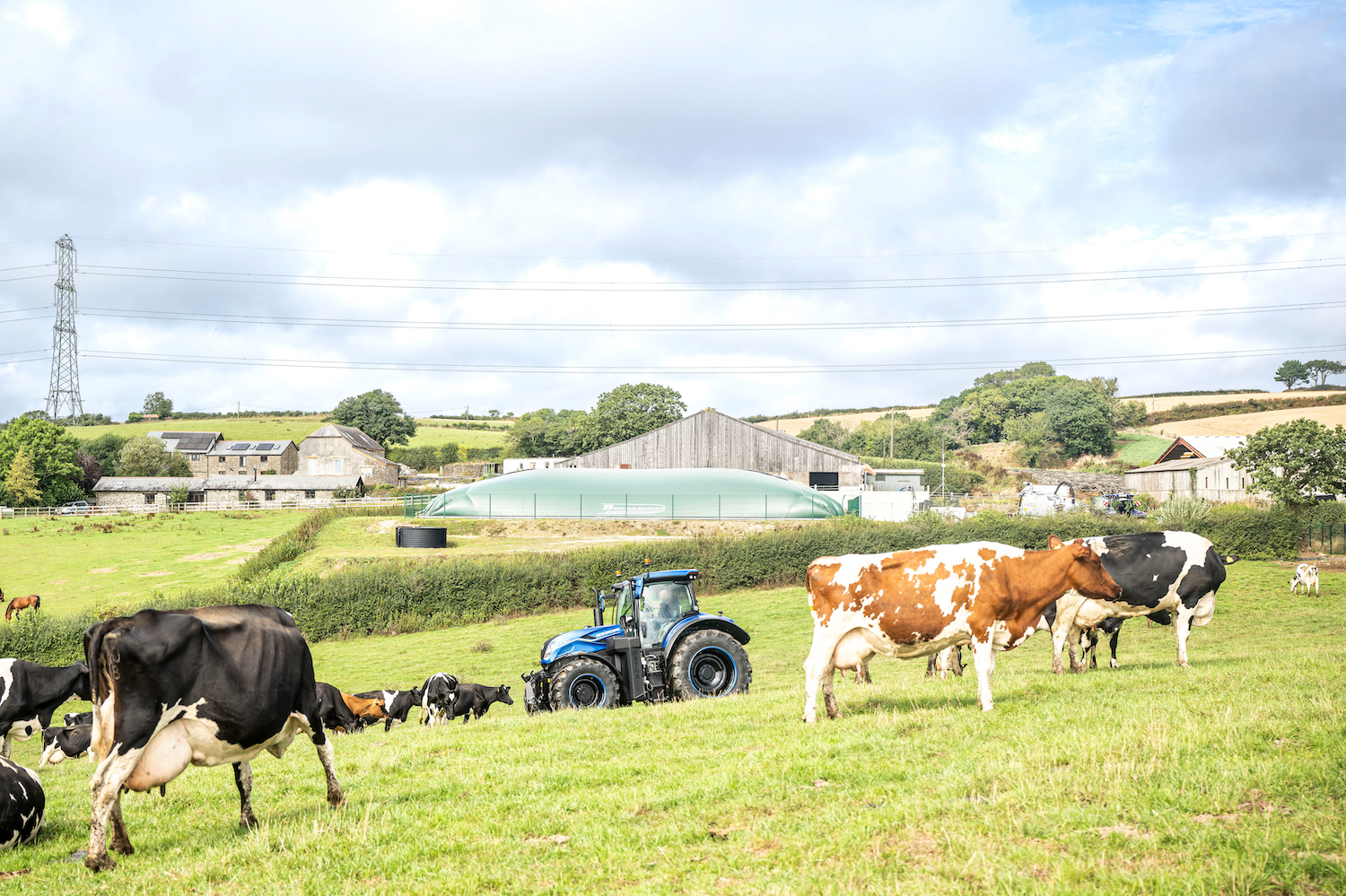
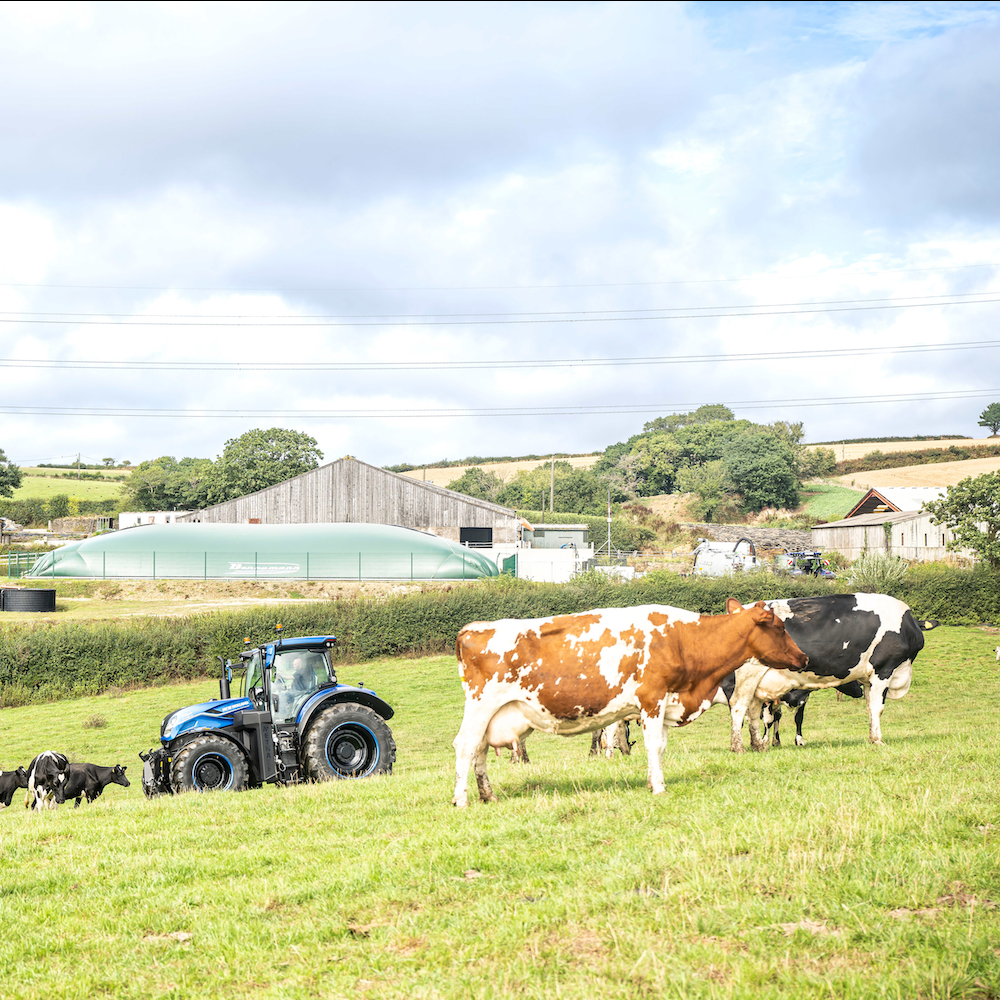
New Holland Agriculture, a brand of CNH Industrial, introduced a pre-production liquid gas tractor, the T7 Methane Power LNG, in December 2022.
As the cost of wind turbines and solar panels continues to plunge, farmers can benefit from new opportunities to generate clean power on their land. Capturing methane emissions from livestock manure is another vital clean power pathway, and it is one that can help livestock farmers improve their manure handling systems while producing their own biomethane fuel to decarbonize tractors and other equipment.
The big impact of biogas capture
Methane is a powerful greenhouse gas released into the atmosphere by fossil energy activities and the decomposition of food scraps and other organic matter. Livestock operations are also a leading source of methane, accounting for 32 percent of global methane emissions related to human activity, according to the United Nations Environment Program.
Researchers are developing new types of livestock feed to reduce methane emissions related to flatulence as animals digest food. However, that still leaves the problem of emissions from decomposing manure.
Capturing and repurposing these fugitive methane emissions for energy use is the goal of a venture between the leading agricultural machinery firm CNH Industrial and the U.K. biomethane expert Bennamann. In March 2021, CNH acquired a minority stake in Bennamann and became its exclusive strategic agricultural technology partner, establishing future benefits for customers and the environment.
In terms of global warming, methane is a carbon-containing gas that is over 80 times more harmful than carbon dioxide gas when measured over 20 years. Bennamann’s multi-patented system prevents biogas from entering the atmosphere by preventing direct emissions from manure slurry lagoons and tanks. The biogas is then upgraded to compressed or liquid methane, which is regarded as a ‘better than zero carbon’ biofuel.
The Bennamann process can significantly reduce the carbon footprint of an average dairy farm. For example, the estimated CO2 reduction for a 120-cow farm is equivalent to that of 100 typical western households.
The process yields significant additional benefits. The biomethane fuel can be used to run tractors, or to provide heat or electricity for other farm equipment and facilities. It can also be sold as fuel or converted to electricity for sale back to the grid, providing a new revenue stream for farmers.
In addition, the slurry-sourced methane fuel enables farmers to support their customers’ decarbonization policies.
This solution also helps maintain productive land to grow food. Digestate, the solid byproduct of the process, can also be re-used as an organic soil enhancer, enabling the farmer to reduce the use of carbon-intensive chemical fertilizers.
A solution for small and large farms
Larger livestock farms with anaerobic biogas digesters are in a good position to invest in the equipment needed to upgrade biogas to biomethane fuel, and New Holland Agriculture, a brand of CNH Industrial, introduced its new T6.180 Methane Power compressed gas methane tractor in February of 2022. In December, the company also introduced a pre-production liquid gas version of the technology, the T7 Methane Power LNG.
Smaller farms can also participate in biogas upgrading. The benefits can be especially important for farms that are struggling to manage their open-air manure slurry lagoons.
Instead of investing in expensive anaerobic digesters, smaller farms can capture biogas by covering their open-air lagoons with a sturdy membrane, similar to those used in bouncy castles for children’s parties.
A covered lagoon enables manure to break down naturally without releasing biogas to the environment. The main difference compared to an anaerobic digestion system is the time. The process can take several months in a lagoon, though it only takes a matter of weeks in the optimized conditions of a digester. Still, the end result is the same: Biogas from the decomposing manure can be captured and put to use for methane tractors and other farm equipment.
To upgrade their biogas to purified biomethane fuel, smaller farms could enroll in a mobile gas processing model, rather than investing in their own equipment, New Holland says.
Additional benefits of covered lagoons
New Holland also notes several factors that can help offset the cost of the lagoon cover and help farmers overcome issues associated with open-air lagoons.
“As a tractor manufacturer, we’re interested in the fact that the methane can be used to make fuel,” said Tom Kindred, platform and engineering lead for the New Holland Methane Power tractors. “For the farmer, covering the lagoon reduces the smell, which can be a very important factor. Stopping the rainwater from getting in is another benefit.”
The cover can also be a space-saver: By reducing the amount of rainwater entering the lagoon, the cover enables farmers to store more slurry in the same space. That can be an especially significant benefit in regions where manure cannot be spread in the winter due to waterlogged soil, such as in the U.K.
“Farmers are encouraged to store manure over the wet season, then spread it when the ground is dry, so it is used at the right time of year when the crops need it,” Kindred explained.
Next steps for the energy-independent farm of the future
Kindred notes that the new methane tractors represent the first radical departure from the diesel-fueled tractors that have been used for nearly 100 years. More than an upgrade to modern technology, the new tractors enable livestock farmers to produce their own tractor fuel on site. Compared to the price swings of the global energy market, biomethane provides a stable, predictable source of fuel.
Bennamann has been working with dairy farmers Katie and Kevin Hoare who are tenants on Trenance Farm in Cornwall, U.K., and the system has already made a difference.
Chris Mann, the co-founder, chairman and chief technology officer of Bennamann, said that before the company’s solution was installed at Trenance Farm, it was generating 2,500 metric tons of carbon annually on a 20-year timescale. Since its installation, this has reduced by 90 percent, to just over 250 tons per year.
“There’s 2.5 million farms in the world and working with CNH Industrial, with its global presence and advanced manufacturing capability, is the way forward,” Mann added. “We’re making farms part of the solution rather than the problem. CNH Industrial and Bennamann can be really proud of that.”
New opportunities for energy-independent farms
As more clean power technologies emerge, farmers have new opportunities to transform their land from an energy-consuming model to one that creates renewable energy and contributes to a more sustainable economy. The farm of the future is a multifaceted enterprise that meets the 21st-century challenges of food, energy, water and soil.
This article series is sponsored by CNH Industrial and produced by the TriplePundit editorial team.
Image courtesy of CNH Industrial
This Solar Company Tackles Climate Change with Second-Chance Hiring
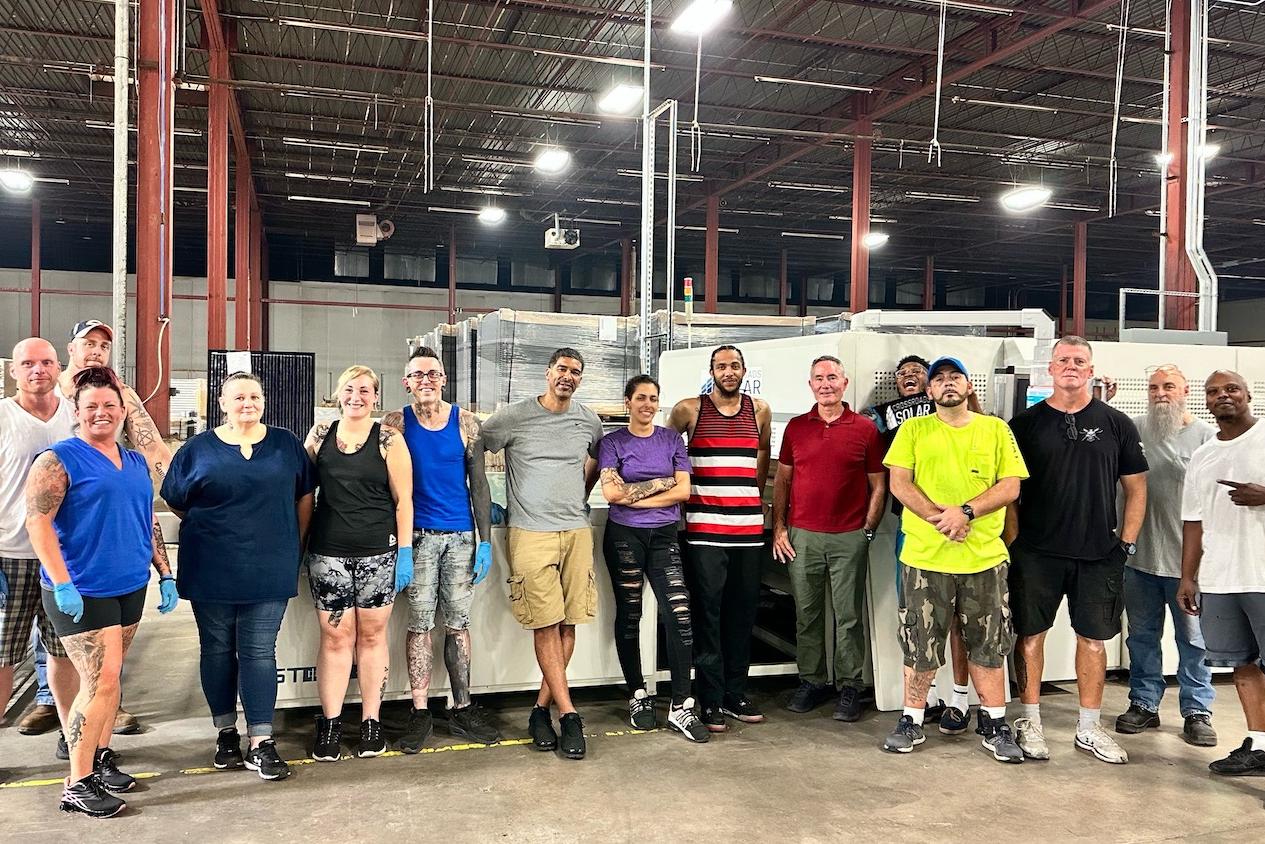
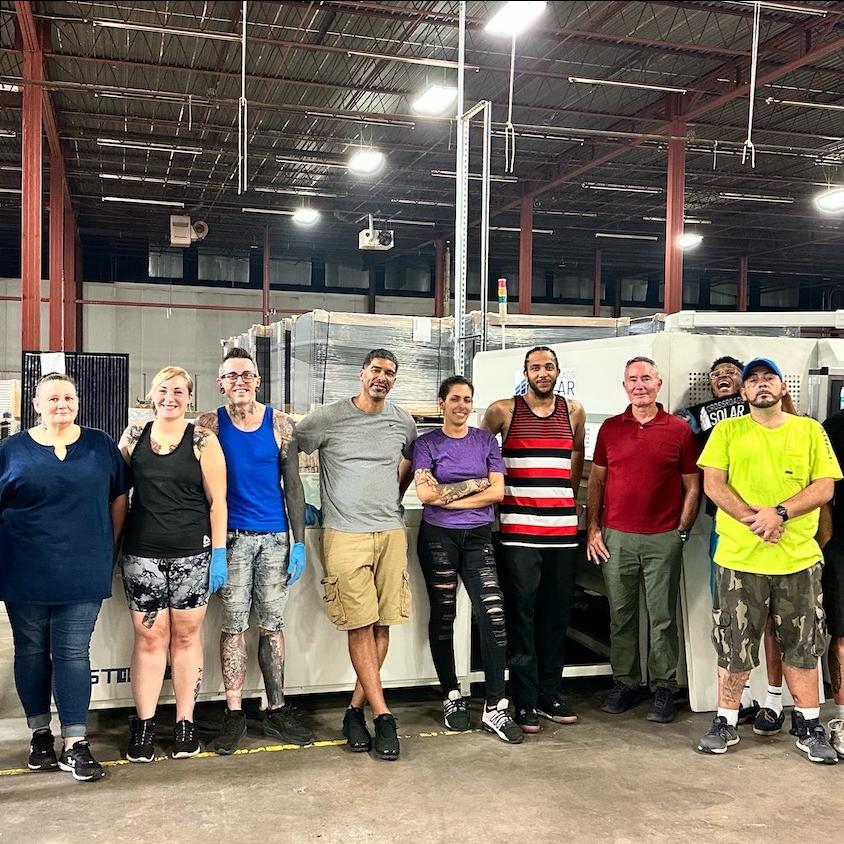
The Crossroads Solar team.
When Patrick Regan left his tenured professor position to start a solar panel company, many of his loved ones balked. He began planning the transition a few years earlier in a document titled “What to Do When Caitlin Graduates” — holding out until his daughter finished college. For nine years, he taught courses on the politics of climate change at the University of Notre Dame, where he was also associate director of the Environmental Change Initiative. But in 2019, he started to think about climate change from a new angle that involved another glaring social issue.
Individuals re-entering society after prison often face huge hurdles to employment. While teaching at Indiana’s Westville State Prison, Regan learned the difficulties of re-entry firsthand. “I was extolling the virtues of college education to 25 men dressed in jumpsuits and [covered in] tattoos. It was the quintessential highly-educated white guy talking about things that didn't quite fit,” Regan said. “One guy, Mark, said, ‘Well, the problem is, professor, your people won't hire us.’”
In response, Regan founded Crossroads Solar, a solar panel company based in South Bend, Indiana. All of Crossroads’ 15 employees were formerly incarcerated, and Regan plans to double that number in the next month. As the solar industry grows with support from climate legislation within the 2022 Inflation Reduction Act, Crossroads’ production capability is growing by four to five times, Regan told TriplePundit. The company’s stated goal is “to produce perfect solar modules with people who have made mistakes, and in the process revolutionize the way we think about crime and punishment and U.S. manufacturing capabilities.”
Crossroads manufactures solar panels for both individual and commercial use, made by humans with domestically sourced equipment and materials instead of mass-producing them abroad. Its products meet the same industry certifications and come with the same warranties as other panels while addressing many interwoven threads of environmental and social justice — including opening the doors and seeing people as people. Regan remembers a staff member’s father sitting in his office, crying, after his son was hired. “His father sat in my office and wept because his son has a chance to live a regular life outside,” he said. “Well, that's what we provide. It's in the DNA of the solar panels.”
Of over 50,000 people released from federal prison in 2010, no more than 40 percent were employed after over four years post-release, according to a 2021 Bureau of Justice Statistics report. These exorbitant numbers persist despite the fact that formerly incarcerated people tend to be more active in the job search process than the general population, according to the Prison Policy Initiative’s analysis.
Grant* began working at Crossroads through a work release program, which allows people who are incarcerated to work outside of prison before their release date. Having been incarcerated as a teenager and released at 39 years old, he described the daunting task of re-entering society. “I struggled with it for years. What am I going to do when I get out? How am I going to survive? All I knew before prison, money-wise, was not a good way of getting money. I had never had a job,” Grant told 3p. “There are a lot of people who don't want to be viewed as a felon or an offender anymore … [but] as just somebody who made a mistake. You don't have to give me anything. Just let me have the ability to earn it.”
A criminal justice history reduces the likelihood of a hiring callback by 60 percent when disclosed on the job application — even in the case of minor and nonviolent crimes, according to a 2017 study. These apparent hiring biases inspired campaigns like Ban the Box, which calls for removing questions about an applicant’s criminal background from initial job applications and delaying background checks until applicants have a chance to show their qualifications.
Despite her work experience and life before prison, Anne* still struggled to find a workplace open to hiring her. “Prior to my incarceration, I had never been in trouble,” she said. “Then I had an addiction that spiraled out of control in under two years. It doesn't matter who you were before [prison]. You start from scratch.”
Amid countless rejections from employers after being released, Anne told her case manager, “I get why people go back to prison.” She has worked at Crossroads for a year and a half now, after learning about the company from a news article. If that hadn’t happened, “I can't tell you what I would be doing,” she said.
Having employment and other basic needs met is shown to drastically reduce recidivism. After Hawaii implemented its Ban the Box law in 1998 — the first of 27 states and Washington, D.C. to do so — 57 percent fewer criminal defendants had repeat offenses, according to a 2014 study.
Upon release, essentials like getting a driver’s license and opening a bank account hinge on having a means to make money and an address. The industries and jobs that are open to hiring formerly incarcerated people often don’t offer reasonable wages or resources to support re-entry, according to the Prison Policy Initiative. Exploiting vulnerable workers contributes to a decline in the price of labor that affects the entire workforce.
Crossroads’ leadership recognizes these patterns in labor and income inequality and maintains the CEO’s salary within 5 percent of what employees earn. “I pay myself functionally what I can pay my employees,” Regan said. “They're buying cars, going to the dentist, going out to the ball game, getting their children back after years of not having their children, they're going out on dates.”
For both Anne and Grant, working at Crossroads was a foundational step toward the rest of their lives. Working with people who understand the transition certainly helps. “The people I work with are like my family because they know what it's like to lose everything,” Anne said. “Being incarcerated really does something to your psyche. [Before], I was super outgoing, loud, always laughing. Being [at Crossroads] has brought that back out in me.”
The company’s practices point to a deeply human and pragmatic understanding of not only second chances, but also the interconnected web of our shared social issues — from climate change to recidivism.
Regan’s point of view approaches this web with optimism. “I don't think … my role in life is to judge what is good and bad,” he said. “I'm just taking people who want to get it right after having made a mistake.”
*Last names omitted upon request.
Image courtesy of Crossroads Solar
Long-Duration Energy Storage Connects the Wind and Solar Dots in Texas
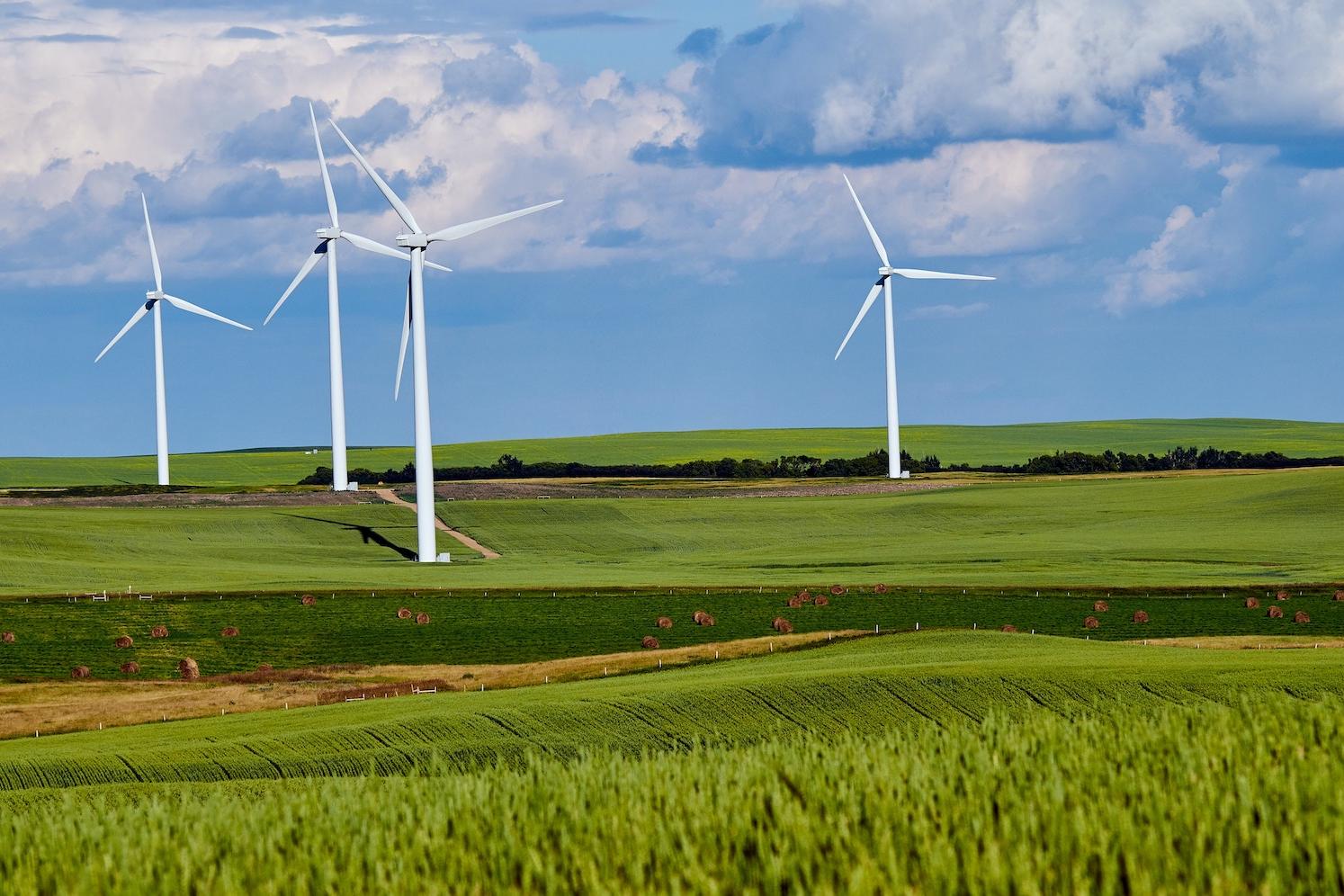
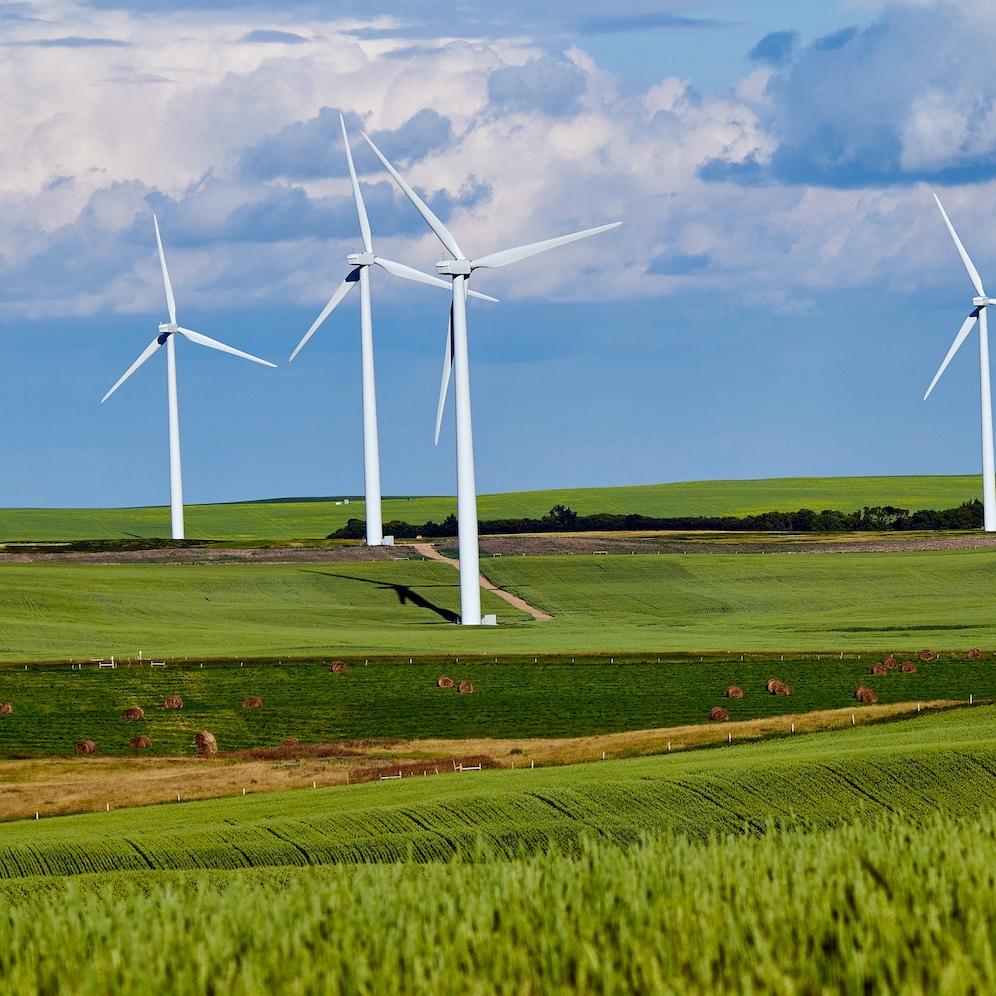
A new resource for businesses seeking clean energy is emerging in the form of long-duration energy storage systems. Long-duration systems can produce electricity from wind and solar resources on a steady basis, regardless of the weather or time of day. They can also offer additional benefits including safety, ease of management and avoidance of toxic substances.
The need for long-duration energy storage
Lithium-ion battery arrays are currently the main form of energy storage systems for renewable resources. Utilities and other users routinely deploy them to fill in recurring gaps in wind and solar availability. Energy storage also enables renewable energy buyers to take advantage of low prices when excess wind and solar power are on the grid and avoid costly peak rates during high-demand periods.
Lithium-ion energy storage will likely continue to be relevant for the foreseeable future. However, as wind and solar resources take up an increasing amount of space in the nation’s electricity supply, the need for new long-duration storage systems has come into sharper focus.
“Lithium-ion is great for short duration, but there are supply chain and safety issues. If you want storage for 10 hours, or days, or weeks, you need long-duration energy storage,” explains Julia Souder, CEO of the multinational organization Long Duration Energy Storage Council.
One main issue is the relatively short length of duration for lithium-ion battery arrays. Four hours of duration is common, and a timespan of up to eight hours is emerging. Still, for planning, reliability and resiliency purposes, the U.S. Department of Energy advocates for long-duration periods of more than 10 hours, ranging up to days, weeks, months and even whole seasons.
Fire prevention is also a concern for lithium-ion technology due to the flammable electrolyte used in lithium-ion batteries. In addition, the lithium supply chain has raised issues, partly due to the use of open-pit mining and the evaporation of brine in large lagoons. More sustainable lithium recovery technologies are in development, but in the meantime, new lithium mines in the U.S. have already become the focus of criticism over environmental and cultural impacts.
Texas is primed for long-duration energy storage
Texas has been an epicenter of U.S. oil and gas production for generations, so it may seem an unlikely place to spot new innovations in long-duration energy storage. Nevertheless, the state’s vast wind and solar resources have made it an ideal place to establish new long-duration energy storage systems.
In addition to leading on wind and solar power, Texas is already among the top states for energy storage capacity, including several projects that demonstrate new and emerging long-duration energy storage technologies.
The unique character of the Texas grid also encourages innovation. Other states in the contiguous U.S. can share power generation resources through a network of interconnection regions. The regional system was established in the 1990s to help ensure reliability and resiliency on a national basis.
In contrast, almost the entire state of Texas is walled off into its own, isolated grid. The falling costs of wind and solar power have motivated the state’s grid manager — the Electric Reliability Council of Texas (ERCOT) — to focus attention on renewable energy resources within the state, leading to an emphasis on energy storage, as well.
Innovations in long-duration energy storage
There is a “huge push” for new duration-extending battery formulas based on alternative chemistries including zinc, iron and vanadium, Souder said. Many of these new electrochemical solutions are containerized, and multiple containers can be stacked at the same site to provide for different types of energy storage.
Green hydrogen and thermal energy storage systems also fall into the long-duration category, Souder explained. Both are beginning to emerge in Texas, with examples including the ambitious Hydrogen City green hydrogen project in Duval County and research into new thermal storage materials at Texas A&M University.
“Everyone is asking about fossil fuels and how to replace gas plants. This is what our thermal energy storage companies are doing,” Souder said. “They are working with utilities and making heat from wind or solar power.”
Leveraging the natural gravity of the Earth
Another type of solution is illustrated by the energy storage startup Renewell Energy, headquartered in Texas and California. The company describes its Gravity Well system as flexible and able to generate electricity for “weeks to months scenarios” as well as shorter durations of two to eight hours.
Gravity systems deploy excess renewable energy to raise blocks or other weights. When the weights are released, their gradual downward motion drives a mechanical system that generates electricity.
The concept is similar to pumped hydropower storage systems, which today account for the vast majority of long-duration energy storage capacity in the U.S. However, pumped hydropower requires specific geological features, ample water resources and significant infrastructure. Block-type gravity systems can be applied on a much greater range of sites, with a relatively small infrastructure footprint.
Renewell partnered with the U.S. Department of Energy in a five-year project to deploy Gravity Well systems within disused oil and gas wells in the U.S. for energy storage, while also plugging them and monitoring for any signs of leakage.
The Swiss firm Energy Vault is also bringing its above-ground gravity storage system to Texas, in a partnership with Enel Green Power.
Compressed air energy storage is another new long-duration technology emerging in Texas. One system under construction in West Texas is deploying natural salt caverns for storage and renewable energy for the compression system. Though the system requires natural gas to heat the compressed air, it is described as a more efficient alternative to conventional gas-fired power plants. Green hydrogen could also potentially fill that role, eliminating the need for fossil fuel.
One last dot to connect
Now that the technology pieces are falling into place, the Long Duration Energy Storage Council is focusing on energy market policies that create a healthy economic environment for long-duration systems. Financial support from the U.S. Department of Energy and a 30 percent tax credit for standalone energy storage systems in the 2022 Inflation Reduction Act have made a difference, but more can be done in order to accelerate investment.
“What we need to see is storage treated as a transmission asset, not just a generation asset,” Souder said. “It can maximize renewables and defer building new transmission lines.”
Texas Gov. Greg Abbott and other leading officials continue to lobby against renewable energy, but cracks are appearing in their opposition. In December, for example, Abbott issued an official statement of support for a massive green hydrogen project in Wilbarger County.
Extreme heat related to climate change is also turning attention to the benefits of energy storage. The state’s wind and solar assets are already credited with helping the Texas grid cope with high demand during a series of heat waves this summer. Now, energy storage is also playing a role.
Last week, Climatewire reporter Benjamin Storrow observed on Scientific American that a “battery boom is helping to stabilize the Texas power grid, offering a template for utilities that want to cut their greenhouse gases even as air conditioners hum wildly during heat waves." The article focused on short-duration battery systems, which were called into action between the hours of 3:00 p.m. and 8:00 p.m. one evening when air conditioning use soared. In addition to supporting grid stability during that period, the extra capacity helped to reduce demand-related price spikes.
With new long-duration energy storage systems in hand, Texas businesses can look forward to a more stable and resilient grid, improved predictability in their electricity costs, and more opportunities to free themselves from the burden of fossil fuels.
Image credit: Abby Anaday/Unsplash
Training the Next Generation of U.S. Truck Drivers
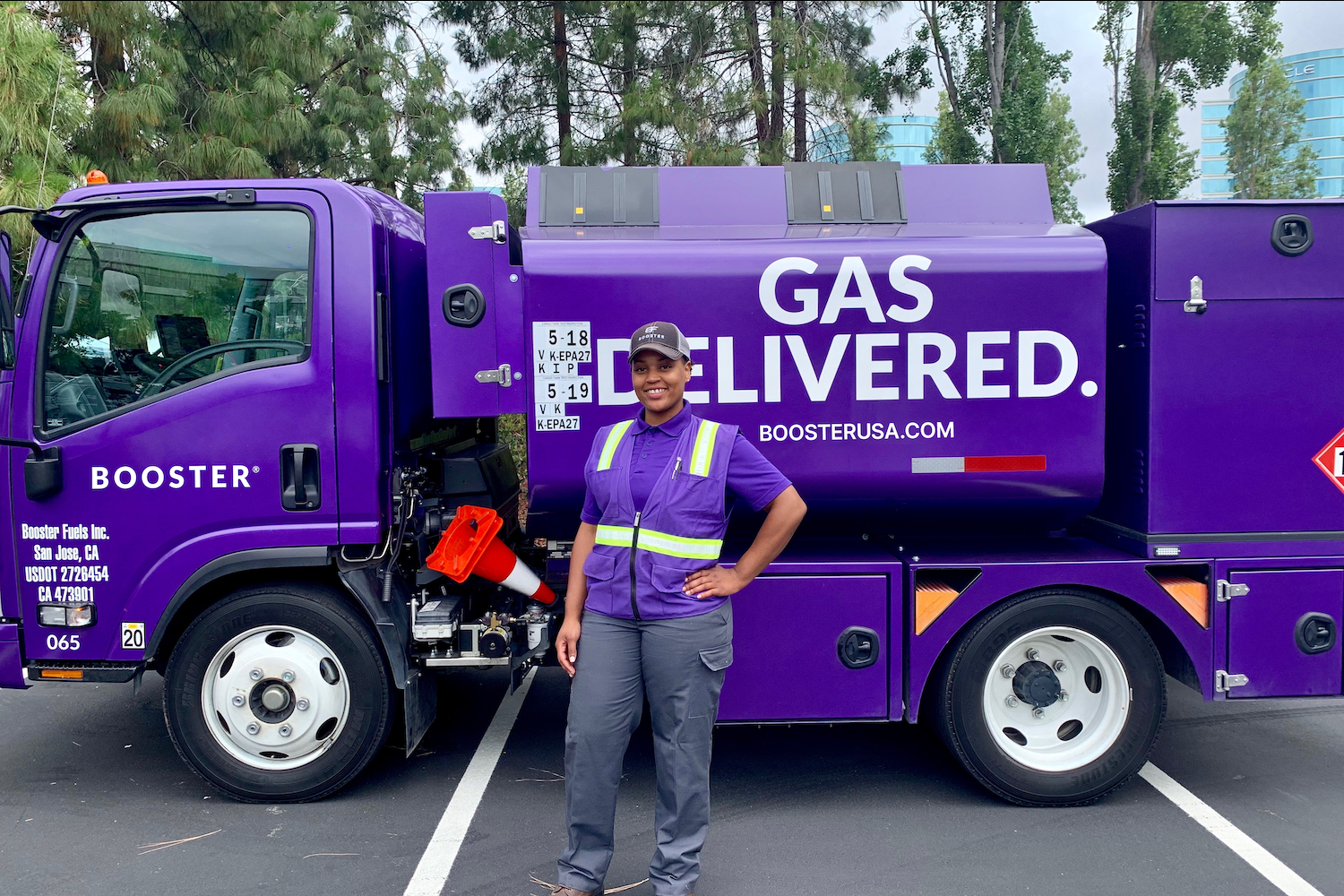
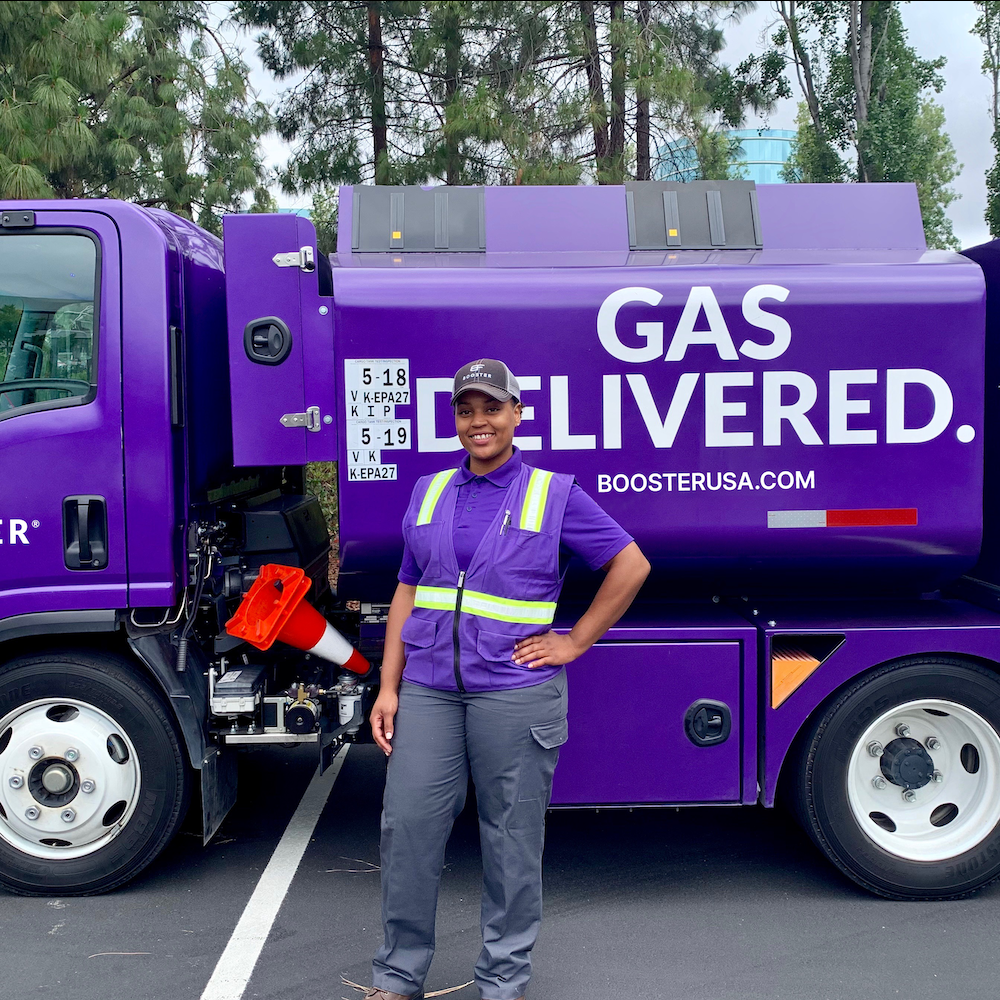
Truckers are in short supply in the U.S. due to a difficult labor market caused by harsh schedules, wage stagnation, and high up-front costs. Despite the high demand, the trucking industry has had a shortage of drivers for over 15 years. The demand for truck drivers is compounding as the popularity of online shopping and next-day delivery continues to rise. Without major changes, the industry will require an extra 160,000 drivers by 2030.
To address the trucker shortage, the mobile energy delivery company Booster created its internal training program for truckers called CDL (Commercial Driver’s License) Academy. “CDL Academy helps improve the lives of people in the communities we serve,” said Samuel Steinmetz, the company’s manager of ops quality and training. “In 2021, the median personal income in the U.S. was $37,552. At Booster, entry-level service professionals earn $52,000 to $62,400 per year.”
Other trucking companies have CDL training programs, but they often come with up-front costs and low beginning wages that keep many would-be truckers from getting their license.
The idea to create a trucker training program at Booster started with Steinmetz. After working at Booster for two years, he saw how difficult it was to find licensed truck drivers willing to do the work that Booster service professionals do — and to retain those drivers once they’re hired.
“I lobbied our leadership to do our commercial driver training in-house and teach them how to go get their license,” Steinmetz said. “We saw such a big opportunity to drive value for all our stakeholders, they gave me a crack at it. Our pilot had 15 people, and it changed the culture of that yard permanently. From there, it turned into a full-time job. Running CDL Academy and expanding it into our other markets has become a part of the way Booster does business.”
Candidates wanting to get a job with Booster and become service professionals with a clear career path must first go through typical pre-hire Department of Transportation (DOT) requirements including background screening and fingerprinting. After progressing through the background check, candidates are assigned to shifts. They spend the first two hours of each shift learning how to get a commercial driver’s license, and the next six to eight hours learning how to do the job of a Booster service professional, pumping fuel and servicing customer accounts. “We have small equipment that does not require a CDL to operate, so while they’re in training, they operate the smaller equipment,” Steinmetz explained. Candidates have up to 90 days to complete the training program, but Steinmetz noted that he has seen people complete the program in as little as 30 days.
For Booster, investing in growth and development has been a success. “Looking at our data, it’s clear that our CDL Academy produces high-quality teammates who are committed to what we're doing, as seen by the low attrition rates of graduates,” Steinmetz said.
Bringing in high-quality employees is especially critical for Booster because the service professionals’ job is different from the ‘typical’ trucking job.
Steinmetz noted that the national trends that have contributed to the trucker shortage, such as aging labor pools and stagnant wages, are not the same issues that affect Booster. “We look for a different talent profile than many other companies in the industry. There are a lot of people who are interested in driving and would like to enter the industry, but aren’t looking for a job that requires them to drive for 10 straight hours or be away from home for long stretches. That’s where Booster comes in.”
Steinmetz believes candidates who come to CDL Academy and want to work for Booster are attracted to the company because the company provides ample opportunity for career advancement and benefits that other companies in the industry can’t offer. “Booster is different,” Steinmetz said. "We offer our service professionals the chance to be home every day, flexible schedules, tech-enabled work, and a balance between service and driving. And on top of that, we give them the training they need to build a career they love and can grow in.”
The trucking industry has a 5.4 percent unemployment rate, but turnover remains high, with about 40 percent of truckers staying at a given carrier for less than a year before moving on. “That last part hurts us. We need people to learn the job and stay,” Steinmetz said. “It’s easy to teach people how to drive a truck, but it is difficult to learn the job and choose to stay long-term. We need to find people who are already a good cultural fit and then teach them what they need to know.”
This article series is sponsored by Booster and produced by the TriplePundit editorial team.
Image courtesy of Booster